Contents
The white butterdish is a small, edible mushroom that belongs to the butterdish family. In some sources you can find its Latin name Suillusplacidus. It does not differ in special taste qualities, but it does not cause harm to the body when consumed. After harvesting, this species must be processed as soon as possible, since its pulp is perishable and subject to decay.
What does the white oiler look like?
The mushroom got its name for the whitish or even light gray color of the hat and legs. At the site of a cut or break, the color of the pulp, oxidizing, may turn red.
Cap Description
Small, barely formed Suillusplacidus, have small convex caps less than 5 cm in diameter. Their color is white, pale yellow at the edges. Grown up, they have wide flat caps, sometimes concave or cushion-shaped. Their diameter can reach up to 12 cm, the color is dirty gray with olive or beige impurities.
In the photo you can see that the surface of the white butter dish is smooth, covered with an oily film, which, when dried, leaves a slight sheen on the hat.
On the reverse side, the cap is covered with dirty yellow tubes, up to 7 mm deep, which also pass to the stem, growing together with it. Over time, they become olive in color, in their small pores (up to 4 mm) you can see a scarlet liquid.
The age of Suillusplacidus can be determined by the color of the cap and stem. White mushrooms in the photo are young butterflies, this can be established by a pale, not yellowed cap and a clean leg.
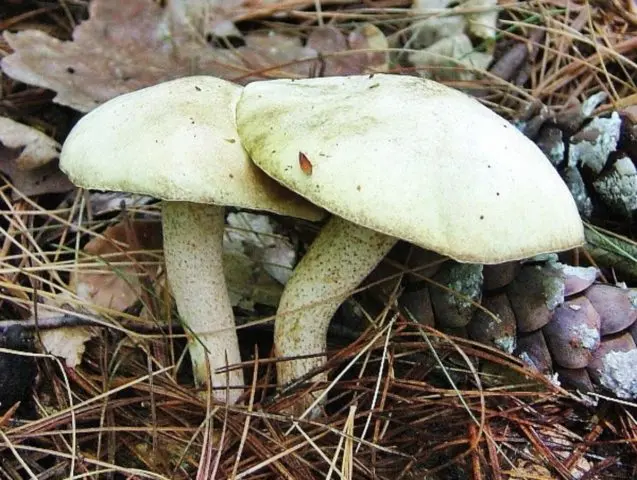
Description of the leg
The leg is thin (up to 2 cm in diameter) and long, up to 9 cm, curved, rarely straight, cylindrical in shape. Its thinner end rests against the center of the cap, the thickened base is attached to the mycelium. Its entire surface is whitish, under the cap – pale yellow. The leg ring is missing. In old fruits, the skin of the stem is covered with dark, brown spots, which merge into one continuous dirty gray cover. In the photo below the description of white butterflies, you can see how the color of their legs changes: in small mushrooms it is almost white, in mature ones it is spotty.
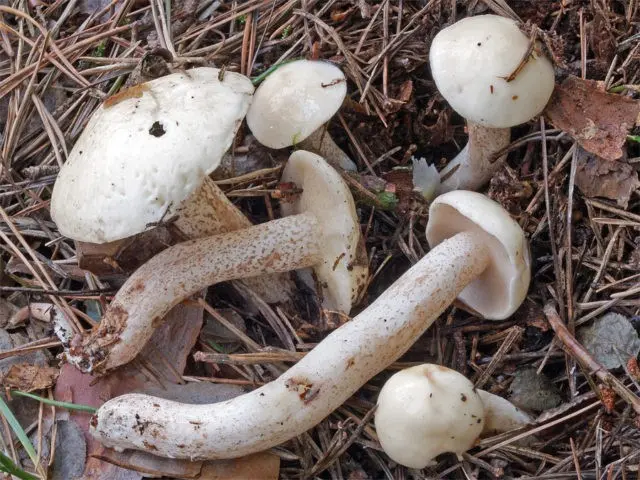
Is the white butter dish edible or not?
This is an edible mushroom species that does not have good taste. The mushroom is suitable for salting and pickling. It can also be fried and boiled. It is desirable to collect only young white mushrooms with a clean leg.
Where and how does the white oiler grow
The mushroom grows in coniferous and cedar forests from late May to early November. There are white butterflies that can be found in deciduous and mixed forests. They grow in the Alps, in the east of North America, in China (Manchuria). In Our Country, the white fungus of the Maslenkovye family is found in Siberia and the Far East, in the central part of the country.
Their main harvest can be harvested in August and September. At this time, they bear fruit abundantly, grow in small families, but single specimens can also be found.
Butterflies are harvested a few days after the rain: it is at this time that there are a lot of them. You need to look for them on dry, well-lit edges of the forest – the white oiler does not tolerate shaded, swampy places. Often mushrooms can be found under a layer of fallen needles. Mushrooms with a white cap, due to which the butterflies are clearly visible against the background of darkened, rotted Christmas tree needles. The fruit body is cut off with a well-sharpened knife along the stem under the root. Do this carefully so as not to damage the mycelium.
Twins of the white butter dish and their differences
This mushroom species has practically no twins. An experienced mushroom picker will not confuse it with other types of mushrooms. Inexperienced lovers of quiet hunting are often mistaken, mistaking the marsh boletus and spruce mokruha for a butter dish.
Boletus boletus is an edible mushroom that is completely similar to white oil. To find the differences, you need to carefully consider the mushroom.
Differences:
- the boletus is larger, the diameter of its cap can reach up to 15 cm;
- on the reverse side, the hat is spongy, convex, passing to the stem;
- the boletus bears fruit very early – from the beginning of May, it is not afraid of frost;
- on the cut, the pulp of the boletus does not change color;
- the leg of the mushroom is clean, covered with a velvet coating, but there are no spots or warts on it.
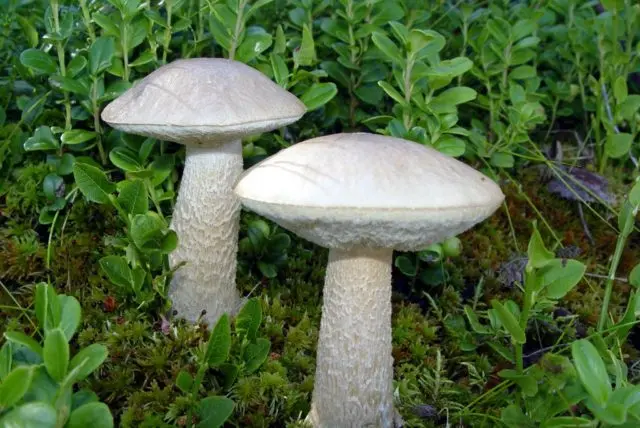
Marsh boletus, unlike white butterdish, is a delicious mushroom with a rich taste and aroma.
The fruits of young spruce mokruha are similar to Suillusplacidus. At the beginning of maturation, it is also light gray in color with a glossy hat. But on the cut, the flesh of the mokruha does not darken, this mushroom can be stored for a long time, its leg is short and thick, covered with whitish plates. When ripening, mokruha darkens, becomes dark gray, it is already easier to distinguish it from white oily fungus during this period. Also, the hat of spruce mokruha is densely covered with mucus on the outside and inside, which is simply not on the butter dish.
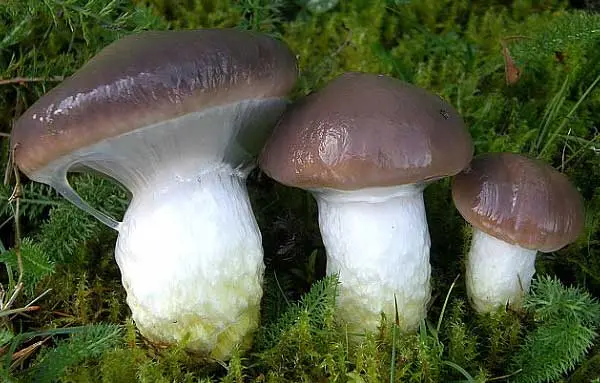
How white butter is prepared
After harvesting for 3, maximum 5 hours, white oil must be cooked. Previously, they remove the skin from them – when cooked, it hardens and begins to taste bitter. Before cleaning, they cannot be soaked or washed, the surface of the fungus will become slippery, it will become impossible to cope with it. As soon as each hat is cleaned of the film, the mushrooms must be washed.
Boil butter for no more than 15 minutes. After that, they are salted or pickled. Mushrooms can be dried for the winter, canned with vinegar or fried.
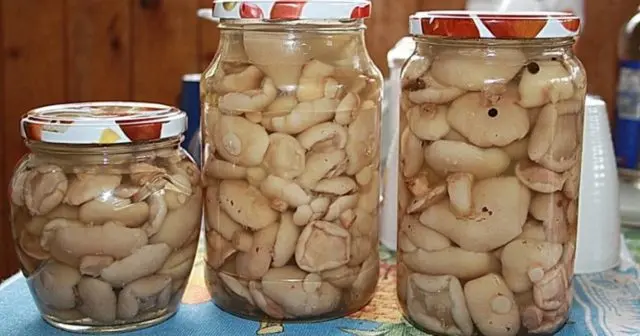
They are used to prepare the filling for pies, pancakes, dumplings, as well as zrazy, meatballs, any creamy mushroom or creamy cheese sauce for spaghetti.
Conclusion
White butterdish is an edible mushroom, which in September can be found everywhere on the edges of coniferous or mixed forests. It does not have high palatability, but it does not have poisonous counterparts. You can collect and eat such a mushroom fruit without fear, it is completely harmless even when raw.









